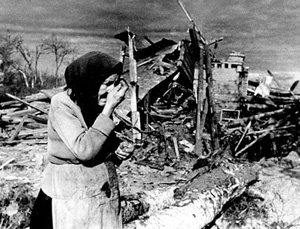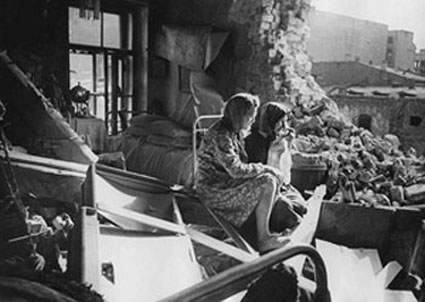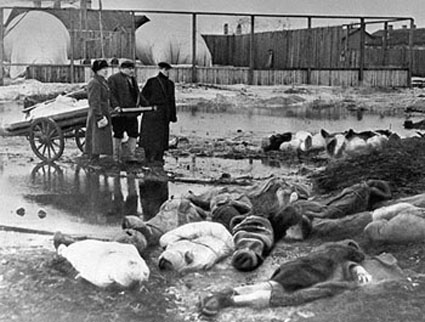Medals: Medal for Defense of Leningrad
Veterans who participated Nina Goldstein, Liya Liberova, Shelma Mushkat, Semyon Perlamutrov, Valentin Rabinovich, Yakov Rats, Zinovi Rogov, Zinoviy Rovner, Berta Tsirkina

dailymail.co.uk
Axis forces surrounded Leningrad on September 8th 1941. Moving through the Baltic States and capturing the city was the German North Army Group’s main objective during Operation Barbarossa. They easily advanced through The Baltics however, Field Marshal Wilhelm Ritter von Leeb was forced to encircle Leningrad after Hitler diverted panzer tanks for an assault on Moscow. German forces congregated in the south while Finnish troops, fighting as part of the Continuation War, blocked the city from the north. Finland had reached most of their Pre-Winter War borders by the end of summer 1941 and maintained the Siege of Leningrad as a means to secure their territorial gains. There was very little shelling from the Finnish side and virtually no coordination between Nazi and Finnish forces. The Nazis frequently bombed and shelled the city, killing over 4,400 civilians in air raids in September 1941 alone. As time went on, food became extremely rare and those that did not die from starvation suffered from severe malnutrition.

dailymail.co.uk
Leningrad residents in what was left of their home after a Nazi bombardment
The Red Army made a small breach in the siege on January 18th 1943, allowing some supplies to enter Leningrad and for limited civilian evacuations over the frozen Lake Lagoda. The unstable ice made crossing the lake dangerous and out of the approximately 1 million people evacuated from the city, tens of thousands are estimated to have died. The siege was officially broken on January 27th 1944, when Soviet forces pushed German troops out of the vicinity of the city. Finland retreated later that summer.
The Siege of Leningrad was one of the most destructive military events in history. It lasted for 2 years, 4 months, 2 weeks, and 5 days (popularly known as the 900 days). Over a million Red Army soldiers died defending the city or trying to break the siege. Between 800,000 and 1 million civilians perished during the siege and evacuation of the city, primarily from hunger.

vaugleyinteresting.co.uk
A Red Army soldier and civilian volunteers dispose of bodies during the siege